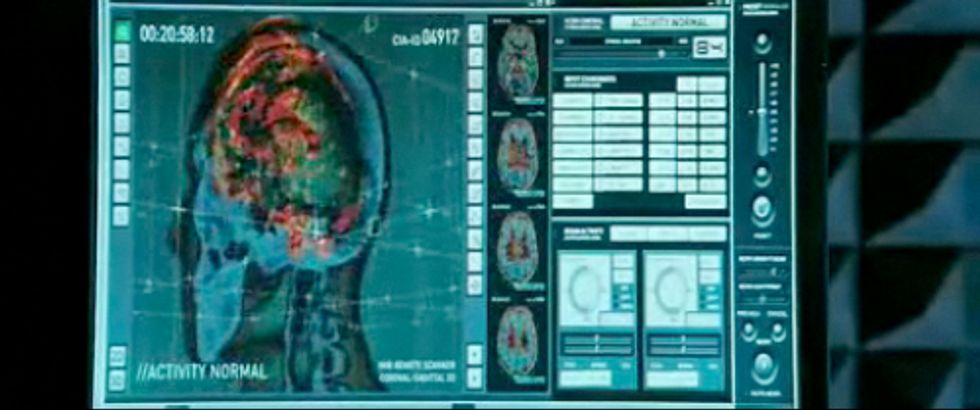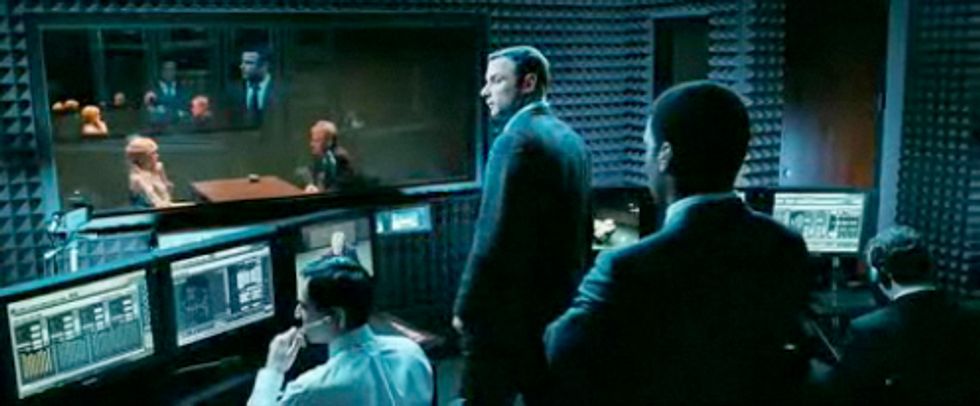The movie's big question hinges on a scene in which Jolie's Evelyn Salt interrogates a "walk-in" claiming to have information about Russian spies well placed in the United States government. When Orlov states that Salt herself is one of them, the audience has to determine the truth of that statement. The CIA operatives, however, claim to be relying on fMRI. Sitting in the next room, apparently looking at brain scans, they claim that the fMRI says that he's telling the truth. So it must be true!
Having just worked on our article, I started laughing. It's always baffling when screenwriters use real technology (Image enhancement! Tritium!) but use it in a way that is futuristically incorrect. Not only was there no evidence of an actual MRI machine--and the enormous magnet that goes with one--but I could spot no wires, and nothing to show how they were pinpointing the brain functions of Orlov himself. Maybe all that acoustic tiling is supposed to be helping. Though maybe they were doing iPhone4 antenna research there as well.
Maybe one day we will be able to do MRI's without an MRI machine or wires. If you want to learn more about what fMRI's are capable of in real life, read our article.
What's the most absurd movie technology that drives you nuts?
Randi Klett is the photo director at IEEE Spectrum where she oversees all photography selection and shoot production across the print magazine and web properties for Spectrum and The Institute. She’s the cofounder of the IEEE Robots Guide, an award-winning interactive site about robotics. She has a BFA in photographic and imaging arts from the Rochester Institute of Technology.






